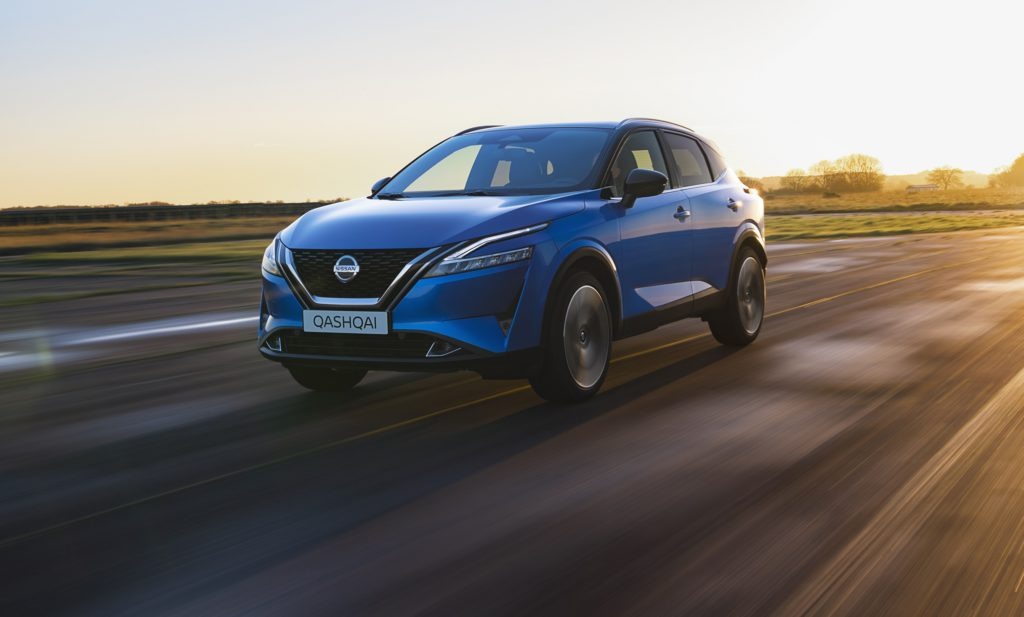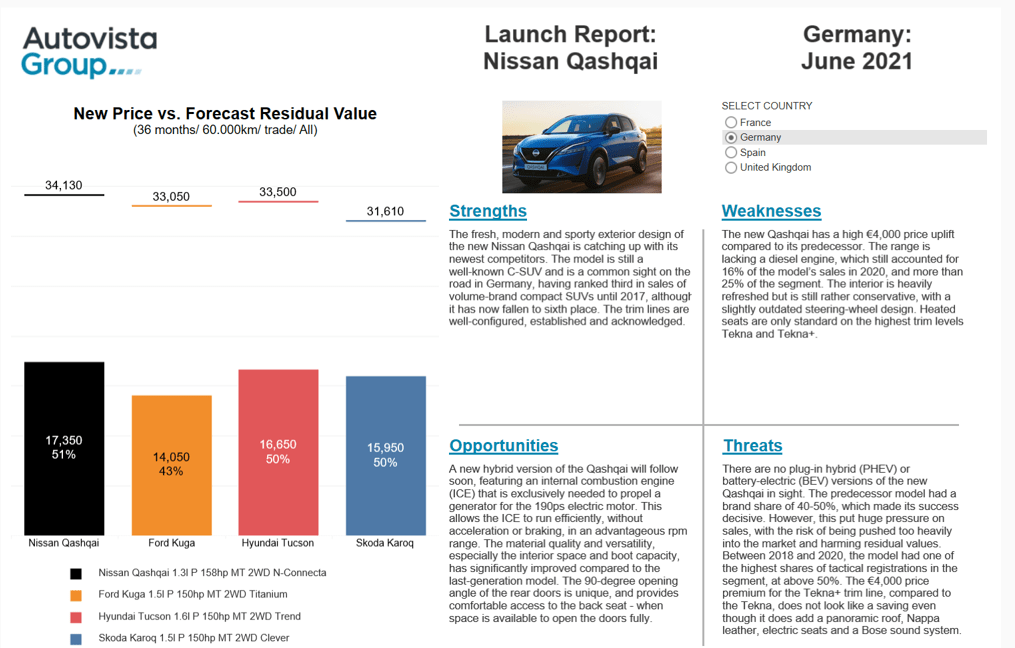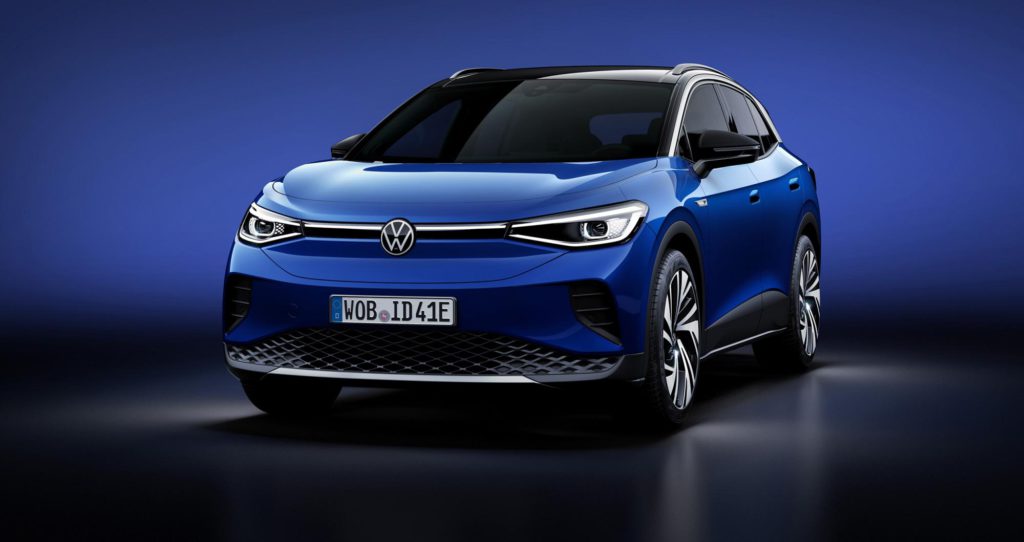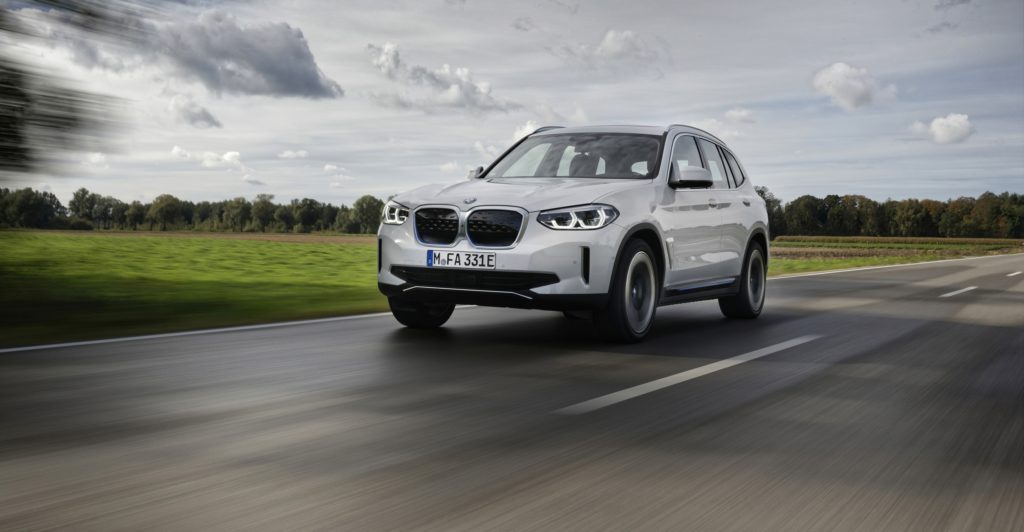Launch Report: Nissan releases Qashqai with improved interior quality and space
11 June 2021

The Nissan Qashqai is one of the pioneers of the C-SUV segment and has always been an industry benchmark. The exterior design is fresh, modern and sporty, while maintaining the model’s identity with its traditional V-shaped grille. The affiliation with the new Juke and X-Trail is evident, especially from the front, which is positive for the design consistency of Nissan’s SUV range.
The latest Qashqai is longer than its predecessor, giving more interior space – especially rear legroom – and a larger (504-litre) boot. It is also 60kg lighter, benefiting CO2 emissions and fuel consumption. The perceived quality has also significantly improved compared to the last-generation model, with the use of more appealing, higher-quality materials. Furthermore, the rear doors can open at an angle of up to 90 degrees, facilitating access and the installation of child seats – and the children themselves.
The level of standard equipment is good, with safety features including a blind-spot monitor, adaptive cruise control (ACC), traffic-sign recognition and rear cross-traffic alert. The 12.3-inch digital cluster and 9-inch central touchscreen attract attention, and the model’s ergonomics benefit from buttons and controls on the dashboard, avoiding reliance on tactile adjustments.

The new Qashqai is available with both two-wheel and four-wheel drive, but is only offered with mild-hybrid (MHEV) petrol engines at launch. There are no plug-in hybrid (PHEV) or battery-electric (BEV) versions of the new Qashqai in sight, although a hybrid ‘e-Power’ version will be launched in 2022. This innovative hybrid features an internal combustion engine (ICE) exclusively needed to propel a generator for the 190-horsepower electric motor. This allows the ICE to run efficiently, without acceleration or braking, in an advantageous rpm range. Without diesel versions, however, the Qashqai could struggle to compete against strong competitors in markets such as France and Spain.
New versions of important rivals have recently launched, such as the SEAT Ateca and Hyundai Tucson, and the Volkswagen Tiguan and Peugeot 3008 have received facelifts. These models are also strong in terms of residual values (RVs). With so many new models in the dynamic C-SUV segment, the Qashqai faces a battle in retaining public interest and value.
Click here or on the image above to read Autovista Group’s benchmarking of the Nissan Qashqai in France, Germany, Spain, and the UK. The interactive launch report presents new prices, forecast RVs and SWOT (strengths, weaknesses, opportunities and threats) analysis.



